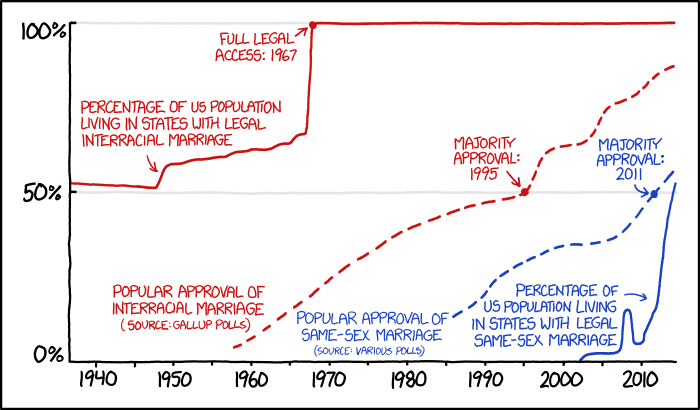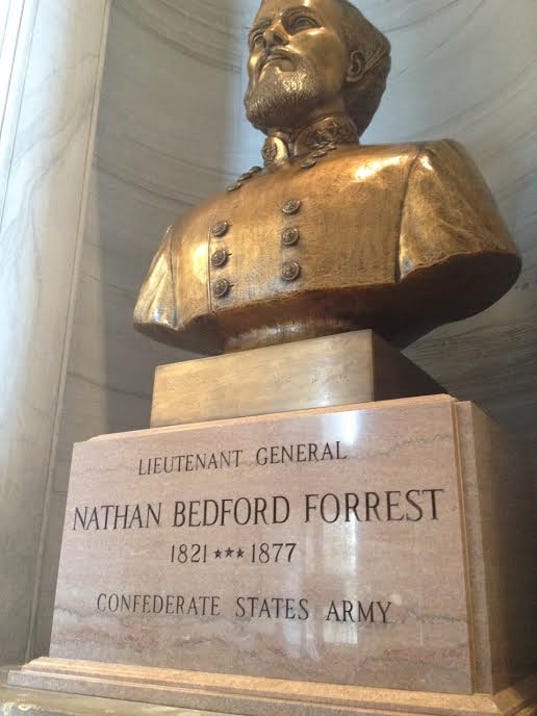 Why President Obama can say “nigger” and I can’t (except when I can)
Why President Obama can say “nigger” and I can’t (except when I can)
Maybe the best treatment of racial slurs ever to appear in a movie was this scene from the 2006 film Clerks 2. Randall, a fast-food worker, can’t understand why porch monkey is racist: When his non-racist grandmother used to say it, he claims, she just meant “a lazy person” not “a lazy black person”. After a black customer (played by Wanda Sykes) freaks, Randall’s friend Dante finally convinces him that porch monkey really is a racial slur (and maybe Randall’s grandmother had more racial prejudice than he remembered). But then Randall decides he’s going to “take it back”; he’s going to keep saying porch monkey, but reclaim it by using it in a non-racist way. A frustrated Dante explains to Randall that he can’t reclaim porch monkey, “because you’re not black!”
“Well listen to you,” Randall responds. “Telling me I can’t do something because of the color of my skin? You’re the racist.”
Randall’s obtuseness and Dante’s exasperation are funny, but Randall’s view is not that different from a lot of white men: Why are the rules different for us? Black rappers say nigger all the time, but when we do it’s racist. Meredith Brooks can name a song “Bitch” and Christina Aguilera can up the ante to “Super Bitch“. But when a guy says “bitch”, it’s sexist. A female writer like Lisa Miller can title her New York Magazine article “Hillary Clinton Finally Has Permission to be a Bitch” and it’s supposed to be, like, liberating or something. But when Glenn Beck referred to Clinton — the same woman! — as a “stereotypical bitch“, that was objectionable.
What’s up with that? When blacks and women can say and do things that white men can’t, isn’t that a double standard? And as Randall says, aren’t the liberals who promote that double standard the real racists and sexists?
In a word, no. But in real life — particularly when an example springs up unexpectedly, like Randall’s porch monkey — explaining why can be frustrating. A whole branch of the media is devoted to promoting what I have elsewhere called privileged distress, the feeling among white men — and Christians and English-speakers and the rich and every other privileged class in America — that they are really the persecuted ones. Their supporting examples and arguments and ways of framing the situation come easily to mind, while the explanations of why that’s the wrong way to look at it require some thought.
So let’s do some of that thinking.
Banter or insult? When blacks say “Hey, nigger” or “What’s up, nigger?” to each other, that’s banter. But if a white man like me walks up to a black and says, “What’s up, nigger?”, it’s an insult — even if I’m smiling and friendly when I do it. Why? There’s actually a color-blind rule here that’s fairly simple: An insult can be friendly banter if it can be thrown right back at you.
The reason it can be banter when one black guy says nigger to another is that the other guy can respond, “Who you calling nigger, nigger?” That doesn’t work when the white guy says it.
It’s not a double standard, because the same rule applies to me in exactly the same way. At my 40th high school reunion last fall, we were constantly making fun of how old we’ve gotten. Picture me with a too-full beer stein, and a classmate saying “Hey, old man, you sure you can lift that? Don’t want to hurt yourself.” It’s banter, and everyone laughs, because we’re all the same age.
But now imagine that the handsome and athletic young guy tending bar says the same thing to me as he serves the drink: “Hey, old man. You sure you can lift that? Don’t want to hurt yourself.” Now those are fighting words. He’s thrown an insult at me that I can’t throw right back. Now I’ve got something to prove.
The same rule applies all over: Fat people can kid each other about their weight. Tyrion Lannister can tell dwarf jokes. It’s not a double standard.
There are no white male equivalents. Sometimes you’ll hear people banter, not by throwing the same insult back and forth, but by using insults that are more-or-less equivalent. Picture two white guys at a bar, taunting each other in a friendly way with dago and pollock.
Some white guys think they should be able to use nigger the same way. The other guy can throw honky or cracker back at us, so it’s all good. Here’s the problem: honky and cracker are in no way equivalent to nigger.
If you just look them up in a dictionary you might think they are equivalent: honky is a racial slur directed at whites, nigger at blacks. What’s the difference?
Usage.
Nigger has centuries of usage behind it, and the connotation of that usage is that blacks are a subhuman race. Nigger evokes a detailed stereotype — lazy, stupid, violent, lustful, dangerous — while honky just says you’re a white guy I don’t like. For centuries, niggers weren’t really people. There’s no equivalent word for whites, because whites have always been seen as people.
If that example of the importance of usage doesn’t ring true for you, look at a different example: cow and bull. If you had recently arrived from Mars, where you learned English out of a dictionary, you might think that cow and bull are equivalent insults for women and men: Each compares a human to a bovine of the same gender.
But those words have centuries of usage behind them, and so they connote very different different ideas. Calling a woman a cow implies that she’s fat, lazy, and stupid, probably good for nothing but whelping and suckling babies. Calling a man a bull, on the other hand, is a compliment. He’s powerful and headstrong. A running back can bull his way over the goal line, while someone who gets intimidated out of making a legitimate claim has been cowed.
Likewise, a Martian might think that prick and cunt are equivalent insults: They each identify a person with his or her genitalia. But a prick is a minor annoyance, while a cunt is a subhuman who is only good for sex. You might have an argument with a prick, but talking to a cunt is just stupid.

Limbaugh.
In short: No way, no how can white men banter with nigger. Neither the word itself nor any equivalent insult can be thrown back at us. Ditto for bitch or cow or cunt. A woman can shoot back with prick, asshole, bastard, or jerk, but it’s just not the same.
Taboos vs. stereotypes. White guys like Rush Limbaugh treat slurs as if they were taboos — words we’re not supposed to say just because we’re not supposed to say them, like shit or fuck. There’s no reason for it, it’s just a rule. Worse, it’s a rule that’s not applied fairly: Only white guys get called to account when they break it.

How Limbaugh pictures himself
Consequently, white guys make slurs the object of bad-boy humor. Limbaugh thinks he is being brave and daring when he calls Sandra Fluke a slut. And he thinks he’s being clever when he finds ways to come as close as possible to saying nigger without actually saying it. (It’s like those I-didn’t-really-say-a-bad-word jokes we told in grade school: “What did the fish say when he swam into a concrete wall?” “Dam!”)
That’s what white guys — and a few non-white guys who are trying too hard to fit in — mean when they brag that they’re “not PC”. It’s a James Dean pose: I’m a rebel. I can’t be bound by your arbitrary rules about what words I can or can’t say.
What’s wrong with that attitude is that society’s distaste for slurs is not a meaningless taboo. There are at least two good reasons for it:
- In any disagreement or discussion, using a slur is cheating: You’re hitting your opponent with a club they can’t use to hit you back.
- Every time you use a slur, you perpetuate the stereotypes it invokes. Calling a black person a nigger raises the notion — whether you’re thinking about it consciously or not — that blacks are subhumans who don’t deserve equal treatment. Calling a woman a cunt reinforces the idea that women are just good for sex, and don’t have to be treated like thinking beings.
The various disadvantaged communities are all debating whether or not it’s ever OK to use the slurs themselves. Some argue that when black rappers use nigger, they jam the stereotype rather than perpetuate it. Some women believe that saying bitch is liberating, because it shows the word doesn’t scare them. Others disagree, believing that any use of a slur promotes its stereotypes.
I think this: Those issues are for those communities to figure out. In the unlikely event that they ask my advice, I might give it. But until then, my opinion as a white guy doesn’t and shouldn’t matter.
Words as words. Now, somebody is bound to point out that in my discussion of why white guys shouldn’t use nigger, bitch, and cunt, I’ve used nigger, bitch, and cunt. Isn’t that liberal hypocrisy? Aren’t I just waving my liberal privilege in Rush’s face, saying “I can say it but you can’t!”?
I plead not guilty. There is a difference between using a word and referring to a word. I haven’t been talking about “the niggers”, I’ve been referring to the word nigger.
Why is that OK? Once again, these are not taboos. There’s no dark magic in the letters that is unleashed whenever they are put together. The power is in the use, not in the pronunciation.
That distinction is too complex for children, so we teach them not to use the words by presenting them as taboo. And this creates problems for children, as when the tattle-tale blurts out: “Teacher, Billy said shit.”
Likewise in the mass media, where children might be listening and might regard the speaker as an authoritative example — “But Mommy, the man on the radio said it.” — we insist on circumlocutions like the N-word. But when adults talk to other adults as adults, we need to be able to name the words we’re referring to. Otherwise you wind up in situations like the stoning scene from Monty Python’s Life of Brian.
Obama on WTF. So now we come to President Obama’s interview on the podcast “WTF with Marc Maron“, where he said:
Racism, we are not cured of it. And it’s not just a matter of it not being polite to say nigger in public.
And that caused a freak-out. Fox News’ Todd Starnes was one among many:
It was disappointing to say the least to hear such a vulgarity come out of the mouth of the leader of the free world.
But there you have it folks – this is man who was supposed to usher in the post-racial America. This is the man who was supposed to unite, not divide.
What President Obama said is indefensible. It soils the dignity of the Oval Office.
That’s a reaction to breaking a taboo: It would be appropriate if Obama had said fuck or shit. We don’t want our president saying crap like that.
But look at it in light of my previous analysis: We have a black man referring to the N-word in a forum not intended for children. It’s fine.
Fox’ David Webb raises this question:
Could you imagine if a Ted Cruz or somebody on the Republican side used it, in the same context, what the reaction would be.
You mean referring to it, in a discussion of racism intended for adults? I’d be fine with it.
Glee. What I’m not fine with is what Ted Nugent did: Use Obama’s example as an argument in favor of slurs and offensive symbols in general.
What sort of politically correct zombie could actually believe that the elimination of a word or a flag would reduce the evil of racism?
What sort of goofball could possibly believe that certain words are OK for one group of people but forbidden by others?
That, by the way, is the definition of racism.
I’m sure Ted and Randall could have a long talk about that, but no, it isn’t.
There’s something gleeful in Nugent’s usage of nigger, and that right there is the final test I’d recommend to any white person who’s thinking about saying it: You might think you’re referring to the word in the analytic way I have endorsed. But while analysis may at times be satisfying or even fascinating, it is almost never gleeful.
So if the word tastes delicious in your mouth, if saying it feels like a forbidden pleasure, something else is going on. Maybe you should reconsider.









































































